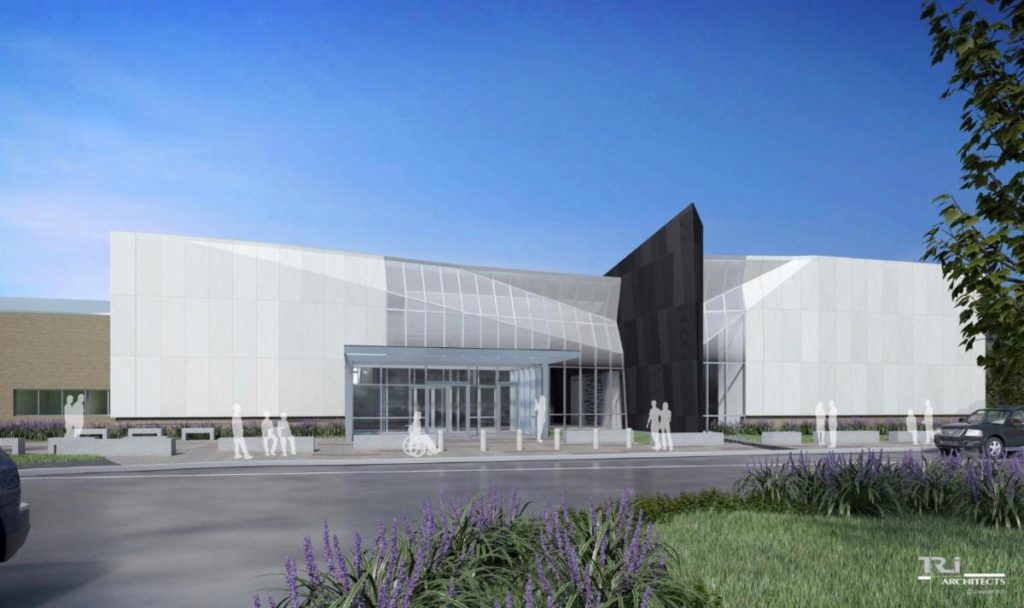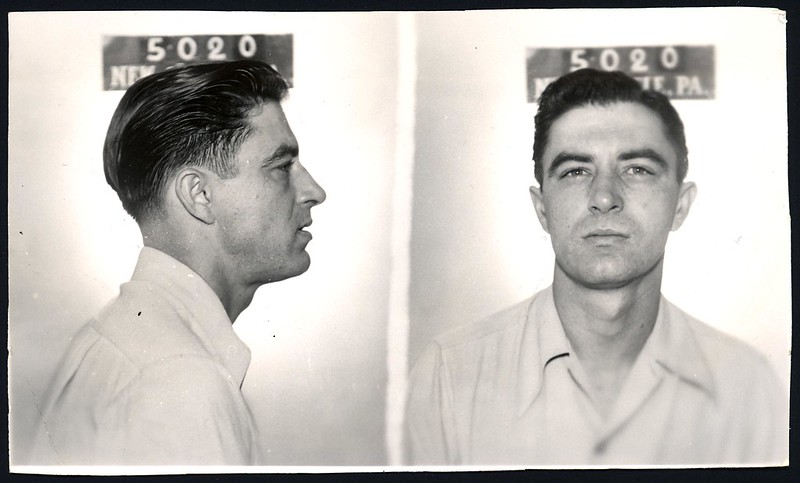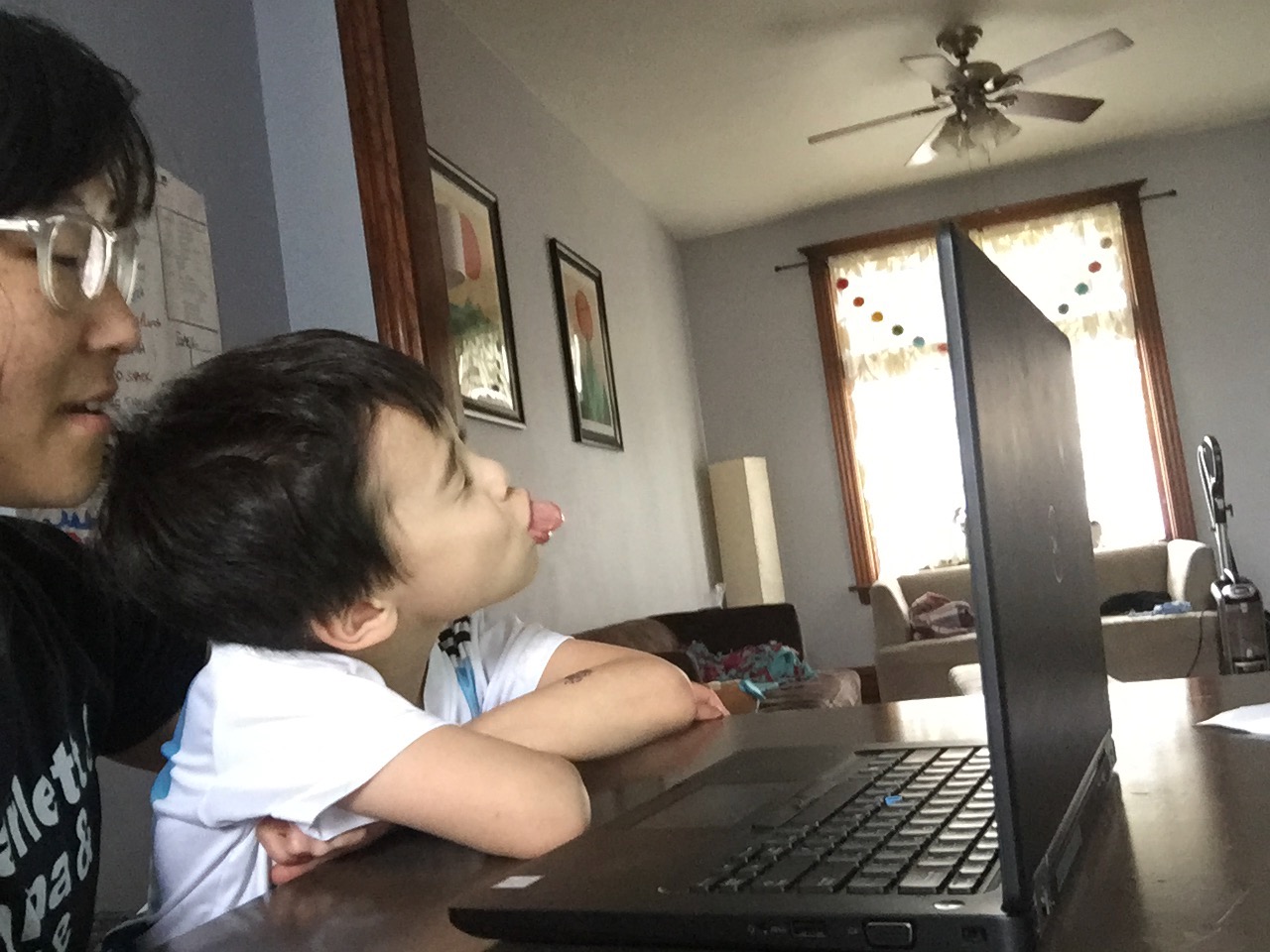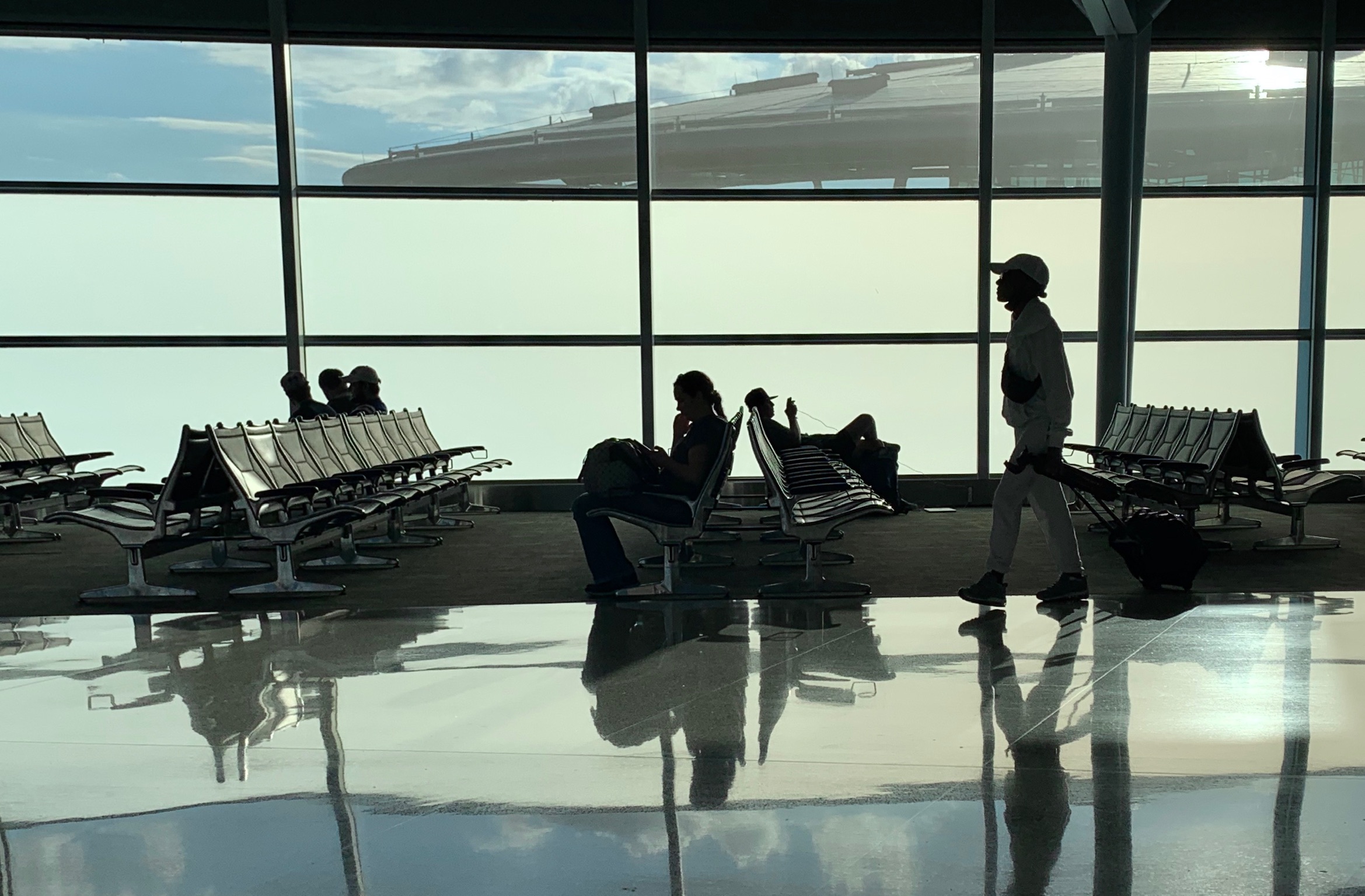Reopening of St. Louis Holocaust museum institutionalizes media literacy education
This spring, historian Amy Lutz invited this curious media literacy educator to visit the unfinished work space being meticulously prepared for a highly-anticipated re-opening of St. Louis’s Kaplan Feldman Holocaust Museum in November.
Wearing a hard hat, glasses and closed-toed shoes for safety did nothing to diminish first impressions of the permanent exhibit space.
Those affective responses I talk about in my classes – highly individual and personal reactions one may encounter when accessing media—immediately took hold. My eyes opened wide, struck by the background murals, the use of scale – how big or small something is in relation to us. And the up-close-and-personal-meetings with the almost life-sized renderings of human beings actually sent chills up my spine.
“We’re going for a transformative experience, and how we do that is by making you feel connected to the content,” Helen Turner, director of education, told me recently.
Turner’s respect and high regard for the power of media literacy education is unmistakable..
“Whenever you’re looking at the Holocaust, the first thing that comes to mind, usually, aside from genocidal acts, is all the questions of why and how. I think a tremendous part of the why and the how is part of the propaganda machine Nazis used to persuade and to move the public towards seeing other human beings in society as less than,” Turner said.
A great regard for historical and cultural contexts, important media literacy education considerations for analyzing media, is certainly evident in the museum’s undertakings, especially with regard to propaganda yesterday and today.
“When we think about that kind of very intense use of propaganda and misinformation we can really make ties to today, and how people are misinformed; or how stereotypes are perpertuated about different groups. We made a very cognizant effort to want all of our visitors, young and old, no matter what background they’re coming from, to really look at this history and to look at the propaganda presented with a very critical lens of what people are being manipulated to see; what are they being taught to think and feel? how can we apply those lessons to ourselves today?”
An interactive media section focused on propaganda prompts visitors to take a real propaganda piece from the Nazi era – about all different kinds of victims.
“So obviously we’re telling a Jewish centric story, but not a Jewish solo story,” Turner adds.
Turner speaks to the importance of the historical example and how we can bridge it directly to today with things like clickbait, Tik Tok, Facebook, memes.
“ All these things that they give us… that snapshot of something, and yet they’re usually a very misrepresented or misleading story. “
Seasoned media literacy educators will appreciate the KFHM education team’s focus on habits of inquiry… the asking of questions, followed by a series of traveling deeper with more questions, said Lutz, the museum’s communications and marketing manager.
“You know, we talk so much here about how important it is to ask, ‘Why is this history relevant?”
Why is it important to learn the Holocaust today?” How did the Nazis take power? That’s a historical question. But it’s a historical question that has relevance today. And so that’s one of the big reasons the education team does have plans to really expand our media literacy curriculum and opportunities because it’s so timely, so much we can do on that front.”
The media literacy definition cited by the National Association for Media Literacy Education is the generally accepted one used in numerous formal and informal classrooms across the U.S: “The ability to ACCESS, ANALYZE, EVALUATE, CREATE, and ACT using all forms of communication.”
The well-thought-out museum expansion, from a 7,000-36,000 square feet space, allows the museum to enliven the media literacy definition and facilitates engagement with history by showcasing a variety of primary resources—texts, photos, audio, personal artifacts, and video recordings — a dynamic way to introduce complicated material.
The person-to-person experiences of the visitors to the museum’s permanent exhibit is heightened via production elements like sound, color, graphics, scale, point of view, and voice facilitating storytelling rooted in the human experience.
Using color
Turner further describes the exhibit space. “Our museum is actually surprisingly colorful. It uses the changing of color to take you into the history. So we haven’t colorized images, but we’re using colors and color tones to change the tone of the narrative as we move through history.
At the beginning of the exhibition, we have a gray line that follows you all the way down into kind of the heart of the Holocaust, where we’re really getting to the mass murder and genocide. And then the line also takes you out as we come towards liberation and the renewal of life.
We never want to create an immersive experience because that would be, I think, traumatizing, and an abuse of power and history. But we are trying to create an atmosphere where we can ask good questions of our visitors. What do you see? What would the people in this image see? What might they smell or hear? You know, what’s happening in these images?
I think we also very creatively used survivor testimony, which is in every single gallery. We have very large quotes from Saint Louis survivors all throughout. We have their images, we have their artifacts, we have their physical voices that you can listen to”, Turner said.
It’s a perfect time to ask Turner to address the challenge of verifying memory.
“I think memory is a curious thing, So I think I would probably answer it in two parts. The first is that the museum believes in the emotional truth of memory, and that means that someone might say, you know, “April 4th, 1933, this happened,” and maybe it was April 5th. But the emotional truth of that memory, right, that my father was arrested, that my mother was beaten, that I was frightened, those things remain true. So as educators, our job is to solidify the facts and the dates and all that kind of stuff. But with listening to someone’s memory, we are seeking and respecting an emotional truth in that space.”
Further, the story of the Holocaust and other genocides prompts a reminder to all media
communicators that language matters. “There are people who, for some time, have used Holocaust as a synonym for genocide, which it’s not. The Holocaust, capital H, was one very specific thing. Genocide is also a very specific thing. We want to be very careful with when we use that language, how we use that language. So I think it just emphasizes the importance of that specificity,” Lutz said.
According to Turner, Holocaust studies and continued scholarship deal with such a complicated and large history, and thus keep Holocaust language evolving, to refrain from using just the term “death camps,” when we know so much more, now, i.e. to differentiate between “killing centers” and killing sites.
“For me, I’m not so worried about Holocaust denial anymore in the world. I’m more worried about Holocaust distortion, and that usually comes from broad strokes in language.”
Lutz adds, “And I think this also goes if anyone makes any comparison to the Holocaust, which I’m quite opposed to, unless there is a very specific reason to do so…to be very specific in that comparison.”
And on the subject of journalists covering the Holocaust, Turner says she would urge them to question the mythologies about the Holocaust. Additionally, “I would hope they not only come away with a questioning and a more nuanced appreciation for this history, but a questioning and maybe a more nuanced conversation with themselves, especially as journalists, about their role in what they put out into the world, and also how they interact and how they perceive others in themselves.”
IMPACT LAB
The museum will feature a special IMPACT LAB, a separate experience that” uses the Holocaust as a core case study to reject hatred, promote understanding and inspire change. “
Also case studies about how journalism impacted the Holocaust will be shared; and terms like bias, stereotyping, hate crimes, genocide, bystander, resister, victim, survivor, and collaborator will be discussed.
Now a stand-alone non-profit organization, recently separated from its parent, the museum has the ability to expand its education capacity as a model education resource that serves the bi-state area. The recently formed Missouri Holocaust Education Commission, and a recently legislated media literacy mandate for all Illinois high schools to teach media literacy prompts Kaplan Feldman to perform even more rigorously during this next stage of its institutional life.
Jessica Z. Brown Billhymer, is a long-serving supporter of Gateway Journalism Review/St. Louis Journalism Review, president and founder of Gateway Media Literacy Partners (GMLP), and a media communications educator, and has often collaborated with the Kaplan Feldman Holocaust Museum, formerly the St. Louis Holocaust Museum, during the past decade. She reports, here, the news of KFHM’s efforts already under way to institutionalize media literacy education(MLE) pedagogy as part of its unfolding education model.



